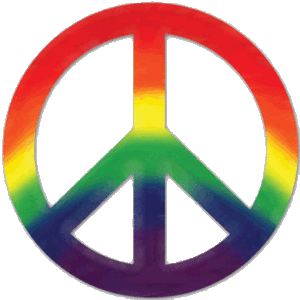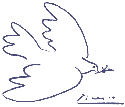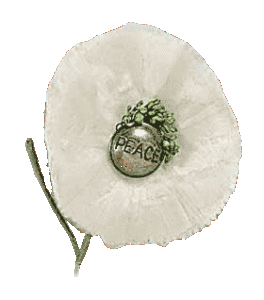Peace Sign and Enduring Symbol at Folk Festivals
Posted on The modern peace sign was originally designed in the late 1950s as the logo for the Campaign for Nuclear Disarmament. It was adopted more broadly as a symbol of peace by anti-war activists in the United States and elsewhere during the 1960s, at time when its presence was seen everywhere in society. To this day, it remains a universal and enduring symbol of peace, hope and social justice.
The modern peace sign was originally designed in the late 1950s as the logo for the Campaign for Nuclear Disarmament. It was adopted more broadly as a symbol of peace by anti-war activists in the United States and elsewhere during the 1960s, at time when its presence was seen everywhere in society. To this day, it remains a universal and enduring symbol of peace, hope and social justice.
The values of the folk movement and those represented by the peace sign are closely aligned, so it is common to see it at folk festivals. This year, if you attended the Hootenanny Stage at Mariposa Folk Festival, you probably noticed the peace symbol prominently featured on the Hootenanny Stage sign along with Mariposa’s trademark Lion’s Face Sun Logo, hand painted in folk art style.
 The peace sign is not the only peace symbol, of course. Peace symbols have been used in various cultures and contexts, one of the most ancient being the olive branch, which dates back to the 5th century BC. The olive tree represented plenty, but the ancient Greeks also believed it drove away evil spirits. The dove and olive branch appear in the Bible, and were important symbols in early Jewish and Christian culture. Centuries later, the dove and olive branch became a more secular symbol, in part because Pablo Picasso popularized it in some 1949 etchings, which were widely adopted by the post-World War II peace movement.
The peace sign is not the only peace symbol, of course. Peace symbols have been used in various cultures and contexts, one of the most ancient being the olive branch, which dates back to the 5th century BC. The olive tree represented plenty, but the ancient Greeks also believed it drove away evil spirits. The dove and olive branch appear in the Bible, and were important symbols in early Jewish and Christian culture. Centuries later, the dove and olive branch became a more secular symbol, in part because Pablo Picasso popularized it in some 1949 etchings, which were widely adopted by the post-World War II peace movement.
 Another peace emblem, the broken rifle symbol of War Resisters’ International is used by the organization and its affiliates but predates the organization, which was founded 1921. The first known example of the symbol is in the mast-head of the January 1909 issue of De Wapens Neder (Down With Weapons), the monthly paper of the International Antimilitarist Union in the Netherlands.
Another peace emblem, the broken rifle symbol of War Resisters’ International is used by the organization and its affiliates but predates the organization, which was founded 1921. The first known example of the symbol is in the mast-head of the January 1909 issue of De Wapens Neder (Down With Weapons), the monthly paper of the International Antimilitarist Union in the Netherlands.
 In 1933, during a period in which there was widespread fear of war in Europe, the Women’s Co-operative Guild began the practice of distributing white poppies as an alternative to the red poppies distributed by the Royal British Legion in commemoration of servicemen who died in the First World. These white poppies glorified peace and the Guild’s strong desire to see differences between nations resolved by means other than war.
In 1933, during a period in which there was widespread fear of war in Europe, the Women’s Co-operative Guild began the practice of distributing white poppies as an alternative to the red poppies distributed by the Royal British Legion in commemoration of servicemen who died in the First World. These white poppies glorified peace and the Guild’s strong desire to see differences between nations resolved by means other than war.
Over the centuries and millennia, the human race has used numerous symbols of peace, many of which have been dropped from common usage to be replaced by newer symbols that better represent the times.
In the grand scheme of things, the modern peace sign is a relative new comer. Despite its youth, it has become deeply embedded in our popular culture and conscience. Expect to see it longingly displayed at folk festivals, and other places where peace-loving people congregate, for many years to come.

